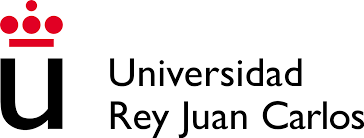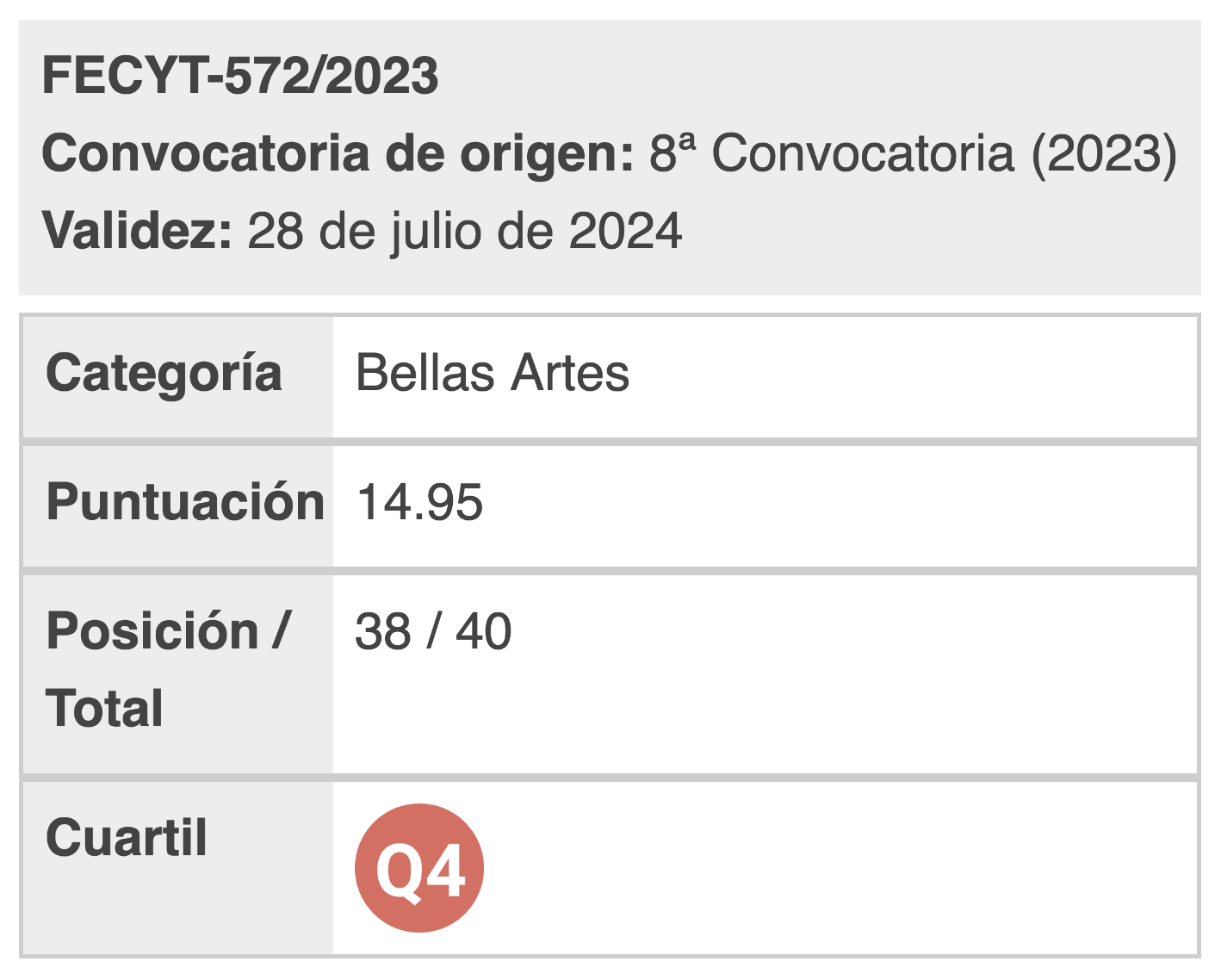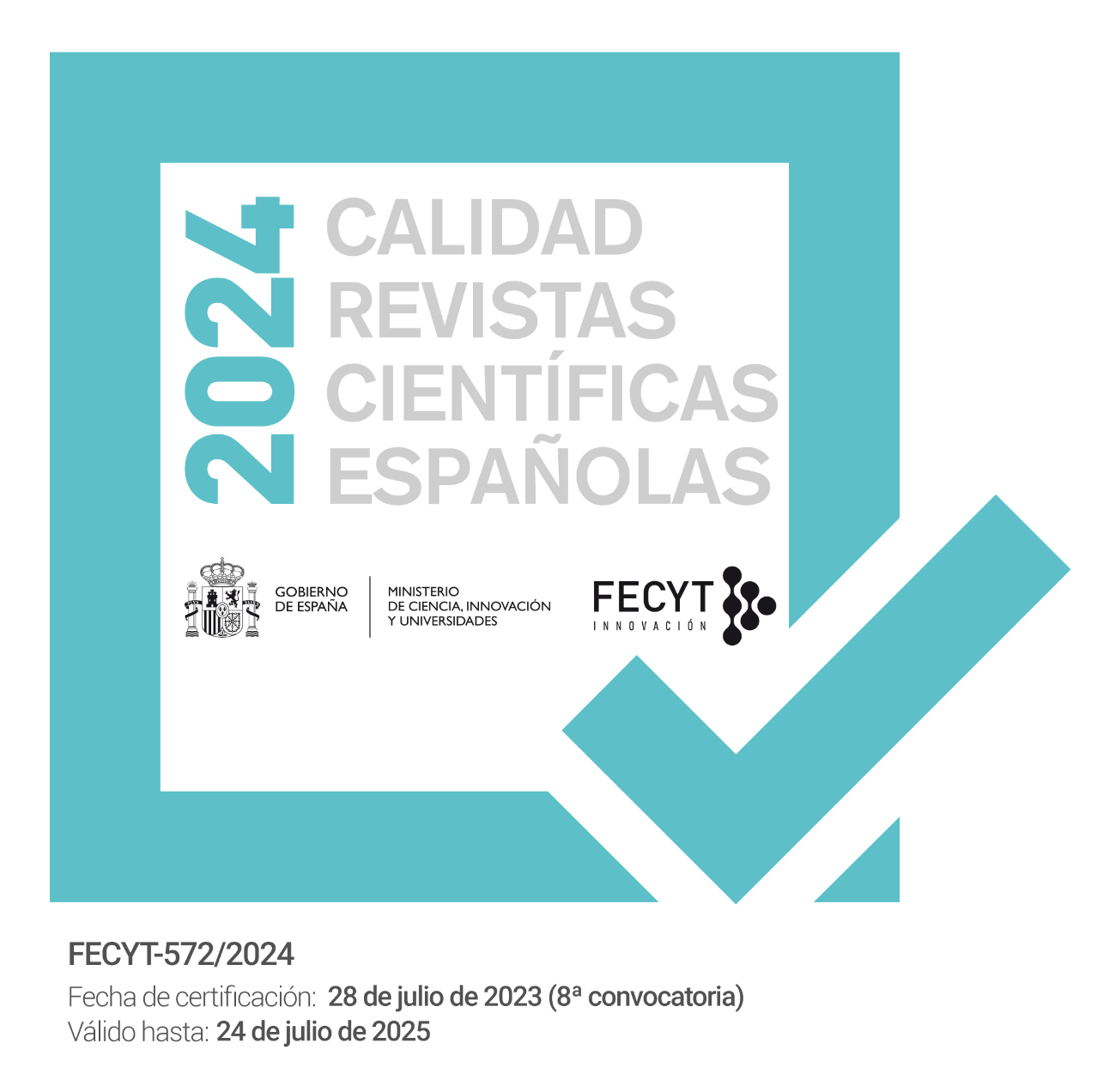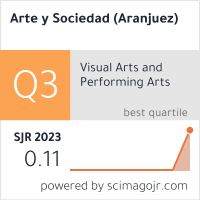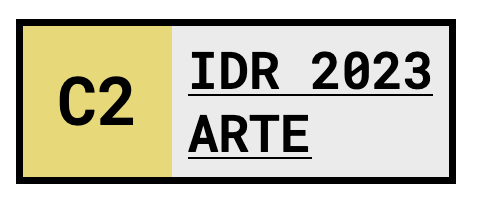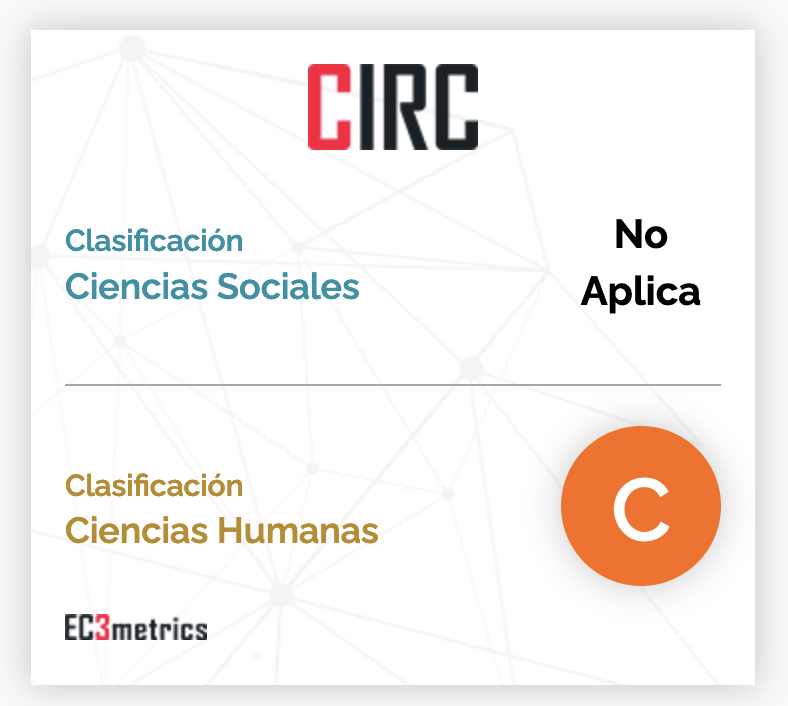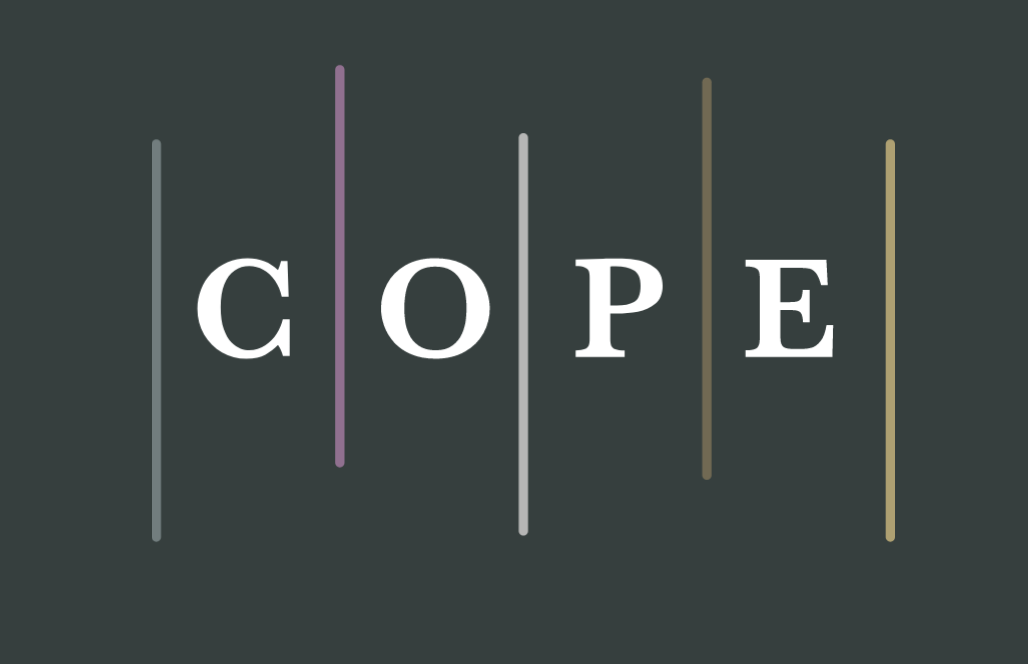Misinformation, visual manipulation and representation of migration on Twitter: analysys of Aquarius Case
DOI:
https://doi.org/10.33732/ASRI.6356Keywords:
misinformation, Image, Photography, Twitter, XAbstract
This work analyzes the role of images as a vehicle for the spread of misinformation related to migration on the social media platform Twitter, as well as the characteristics associated with the images used in such processes. To do this, a corpus composed of 321,585 tweets published during the days when Twitter conversations about the rescue and reception of migrants were most intense was analyzed.
Building upon this analysis, the characterization of images used as a support for misinformation on social media is addressed, highlighting examples of different categories and analyzing, using a descriptive-qualitative methodology, how images can be manipulated or taken out of their original context to support false information.
The results of this study demonstrate that a significant portion of information about migrations exchanged on Twitter relies on visually-oriented content, with photography being the most commonly used medium. Additionally, the importance of developing verification tools based on reverse image search is emphasized as a key measure to combat misinformation on social media.
References
Actis, E., Fouche, H., García, L., Gómez, P., Mazo, P., Pascale, E., Saiz, V., Sánchez, M. J., & Vidal, I. (2005). La estigmatización en el discurso mediático: Los ’otros’ como criminales y víctimas. Cuadernos.Info, (18), 132-139. https://doi.org/10.7764/cdi.18.153
Alberdi, C. (2019). Anti-immigration discourse on twitter: Discourse on others and hate speech. Caietele Echinox, 36, 133-150. https://doi.org/10.32870/cys.v2023.8418
Andaluz, L. (2021). Implicación de las emociones, la orientación política, la identidad nacional y la opinión sobre la inmigración como estrategia en la difusión y viralización de bulos [Unpublished doctoral dissertation]. Universidad Europea de Madrid.
Arrazola, V. y Marcos, M. (2017). Fotografía de prensa y redes sociales: la técnica de Eye Tracking. Ámbitos. Revista internacional de comunicación, 27, 1-21. https://shre.ink/repositorio-ucam
Asociación de la Prensa de Madrid (APM) (2020). Informe anual de la profesión periodística. Recuperado de: https://www.apmadrid.es/publicaciones/informe-anual-de-la-profesion/
Cao, J., Qi, P., Sheng, Q., Yang, T., Guo, J., y Li, J. (2020). Exploring the Role of Visual Content in Fake News Detection. In K. Shu, S. Wang, D. Lee y H. Liu (ed.). Disinformation, Misinformation, and Fake News in Social Media: Emerging Research Challenges and Opportunities (pp. 141-161). Springer International Publishing. https://arxiv.org/pdf/1908.04472.pdf
Calvo-Rubio, L.M. (2017). El uso de Twitter por los partidos políticos durante la campaña del 20D, Sphera Publica, 1 (17), 111-131. https://shre.ink/repository-ucam
Casero, A. (2007). Inmigración e ilegalidad: La representación mediática del “otro” como problema. Cultura, Lenguaje y Representación: Revista de Estudios Culturales de la Universitat Jaume I, 4, 33-47. https://shre.ink/repository-uji
Casero, A. (2005): Alteridad, identidad y representación mediática: la figura del inmigrante en la prensa española. Signo y Pensamiento, 46: 138-15 1. http://www.redalyc.org/articulo.oa?id=86012245011
De Andrés-Del Campo, S., Nos Aldas, E., y García-Matilla, A. (2016). The transformative image. The power of a photograph for social change: The death of Aylan. [La imagen transformadora. El poder de cambio social de una fotografía: La muerte de Aylan]. Comunicar, 47, 29-37. https://shre.ink/Scipedia-com
Debord, G. (1990). Comentarios a la sociedad del espectáculo. Anagrama.
Del Olmo, F. R. (2016). Del tweet a la fotografía, la evolución de la comunicación política en Twitter hacia la imagen. El caso del debate del estado de la nación en España (2015).
Ekman, M. (2019). Anti-immigration and racist discourse in social media. European Journal of Communication, 34(6), 606-618. https://doi.org/10.1177/0267323119886151
Ernst, N., Engesser, S., Büchel, F., Blassnig, S., y Esser, F. (2017). Extreme parties and populism: an anal-ysis of Facebook and Twitter across six countries. Information, communication and society, 20(9), 1347-1364. https://doi.org/10.1080/1369118X.2017.1329333
Fajardo, R., & Soriano, R. M. (2016). La construcción mediática de la migración en el Mediterráneo: ¿no-ciudadanía en la prensa española? Revista Internacional de Estudios Migratorios, 6(1), 2173–1950. http://dx.doi.org/10.25115/riem.v6i1.419
Fernández, A., Revilla, A. y Andaluz, L. (2020). Análisis de la caracterización discursiva de los relatos migratorios en Twitter. El caso Aquarius. Revista Latina de Comunicación Social, (77), 1-18. https://doi.org/10.4185/RLCS-2020-1446
Fuentes, C. (2009). Descortesía y agresividad bajo el anonimato: Internet. In C. Fuentes & E. Alcaide (Eds.), Manifestaciones textuales de la descortesía y agresividad verbal en diversos ámbitos comunicativos (pp. 188-210). Universidad Internacional de Andalucía.
Fontcuberta, J. (2015). El beso de Judas. Fotografía y verdad. Gustavo Gil.
Fontcuberta, J. (2016). La furia de las imágenes. Galaxia Gutemberg.
García, G. M. (2019). Manipulación fotográfica y credibilidad del medio periodístico a través de la fotografía. Correspondencias & análisis, (9), 106-125. https://doi.org/10.24265/cian.2019.n9.06
Garimella, K. & Eckles, D. (2020). Images and misinformation in political groups: Evidence from WhatsApp in India. Harvard Kennedy School Misinformation Review, 1(5). https://doi.org/10.37016/mr-2020-030
Gómez de Ágreda, A., Feijóo, C., & Salazar-García, I. A. (2021). Una nueva taxonomía del uso de la imagen en la conformación interesada del relato digital. Deep fakes e inteligencia artificial. Profesional De La Información, 30(2). https://doi.org/10.3145/epi.2021.mar.16
Hameleers, M., Powell, T. E., Van der Meer, T. y Bos, L. (2020). A picture paints a thousand lies? The effects and mechanisms of multimodal disinformation and rebuttals disseminated via social media. Political Communication, 37 (2), 281-301. https://doi.org/10.1080/10584609.2019.1674979
Heller, E. (2004). Psicología del color: cómo actúan los colores sobre los sentimientos y la razón. Editorial Gustavo, SA. Barcelona.
Igartúa, J. J., Muñiz, C., Otero, J. A., y De la Fuente, M. (2007). El tratamiento informativo de la inmigración en los medios de comunicación españoles. Un análisis de contenido desde la Teoría del Framing. Estudios sobre el Mensaje Periodístico, 13, 91-110. https://shre.ink/revistas-ucm
Kalogeropoulos, A. (2019). How Younger Generations Consume News Differently. Digital News Report. Reuters Institute.
Martínez Lirola, M. (2017). Discursive legitimation of criminalization and victimization of sub-Saharan immigrants in Spanish El País and ABC newspapers. In J. Chovanec, & K. Molek-Kozakowska (Eds.), Representing the Other in European Media Discourses (pp. 135-154). John Benjamins. http://hdl.handle.net/10045/71571
Matarín, E. (2018). La construcción social de la imagen de la inmigración en los medios de comunicación online [Doctoral dissertation, Universidad Complutense de Madrid]. Universidad Complutense.
Matarín, E.; García, F., y Gómez, T. (2020). La inmigración en los titulares de Google Noticias. Revista Internacional de Estudios Migratorios (RIEM), 10(2), 20-50. https://doi.org/10.25115/riem.v10i2.3775
Muñiz-Velázquez, J. A. y Navazo-Ostúa, P. (2021). Desinformación visual en redes sociales y medios digitales: una propuesta taxonómica de la manipulación fotográfica distribuida durante la pandemia. CIC. Cuadernos de Información y Comunicación, 26, 77-87.
https://doi.org/10.5209/ciyc.75235
Nash, M. (2005). Inmigrantes en nuestro espejo: Inmigración y discurso periodístico en la prensa española. Icaria Editorial.
Paris, B., y Donovan, J. (2019). Deepfakes and cheap fakes: The manipulation of audio and visual evidence. Data & Society.
Pérez-Escoda, A., y Pedrero Esteban, L. M. (2021). Retos del periodismo frente a las redes sociales, las fake news y la desconfianza de la generación Z. Revista Latina De Comunicación Social, (79), 67–85. https://doi.org/10.4185/RLCS-2021-1519
Pizarroso, A. (1990). Historia de la propaganda: notas para un estudio de la propaganda política y de “guerra”. Eudema Universidad.
Redondo, M. (2018). Verificación digital para periodistas: manual contra bulos y desinformación internacional. Editorial UOC.
Retis, J. (2007). La imagen del otro: Inmigrantes latinoamericanos en la prensa nacional española. Universidad Católica de San Antonio de Murcia.
Revilla, A. (2011). Una buena praxis en el tratamiento informativo de la inmigración en tiempos de crisis. In J. C. Suárez-Villegas (Eds.), La ética de la comunicación a comienzos del siglo XXI (pp. 17-26). Eduforma.
Ruiz, Silvana (2015). Las redes sociales en internet como fuente de información para los jóvenes frente a los medios convencionales. In Periodismo actual y futuro: investigación, docencia e innovación. Actas del XX Congreso Internacional de la Sociedad Española de Periodística. (pp. 585-599).
Santamaría, E (2002). Inmigración y barbarie. La construcción social y política del inmigrante como amenaza. Papers Revista de Sociología, 66, 59-75. https://doi.org/10.5565/rev/papers/v66n0.1621
Sartori, G. (1998) Homo videns. La sociedad teledirigida. Taurus.
Van Dijk, T. (1987). Communicating racism. Ethnic prejudice in thought and talk. Sage Publications, Inc.
Vives-Ferrándiz, L. (2021). La verdad es hija de la imagen: reflexiones sobre la posverdad en los tiempos del giro visual. adComunica. Revista Científica de Estrategias, Tendencias e Innovación en Comunicación (22), 27-44. https://doi.org/10.6035/2174-0992.2021.22.3
World Association of Newspapers (WAN) (2006). Youth Media DNA. Decoding youth as news & information consumers.
Wahlström, M., y Törnberg, A. (2019). Social Media Mechanisms for Right-Wing Political Violence in the 21st Century: Discursive Opportunities, Group Dynamics, and Coordination. Terrorism and Political Violence, 33(7), Taylor and Francis online.

Downloads
Published
How to Cite
Issue
Section
License

This work is licensed under a Creative Commons Attribution 4.0 International License.
You are free to:
Share — copy and redistribute the material in any medium or format.
Adapt — remix, transform, and build on the material for any purpose, including commercial.
Attribution — You must properly acknowledge the authorship, provide a link to the license, and indicate if any changes have been made.
You may do so in any reasonable manner, but not in any way that suggests that you endorse or receive any endorsement by the licensor for your use.
No additional restrictions — You may not apply legal terms or technological measures that legally restrict you from doing what the license allows.

